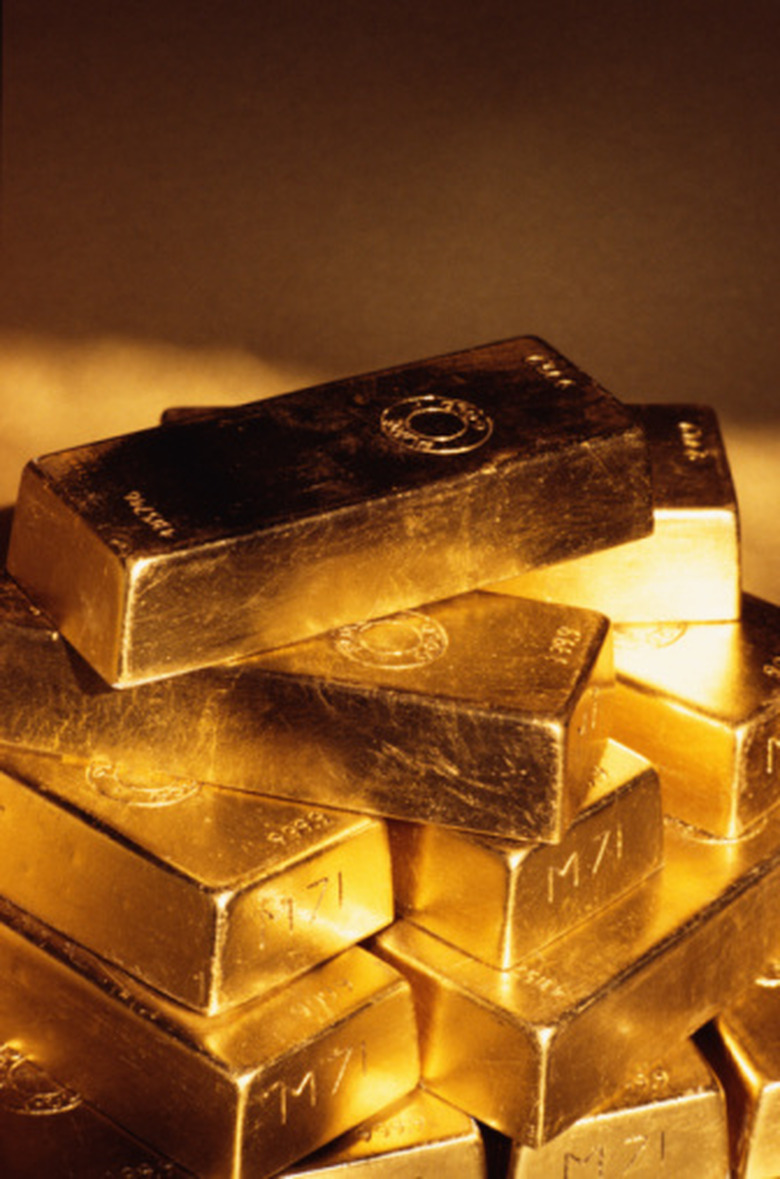How To Make 24K Gold
24K gold is the highest purity of gold commercially sold. It has numerous industrial and investment uses, but the term 24K gold is most commonly associated with jewelry. Because gold is an element, it cannot really be made. However, gold can be refined to the 24K level. Gold found in nature, scrap gold from industry or jewelry less than 24K has other metals mixed, or alloyed, with it. It is possible to refine the gold through a chemical process.
Step 1
Mix one part nitric acid with three parts hydrochloric acid. This will produce aqua regia, which releases free chlorine that will dissolve the gold. As this reaction gives off noxious fumes, this should be done in a vented fume hood or in an area that is safe for such a reaction.
Step 2
Add the gold-bearing material and allow it to dissolve. Some stirring may be required to speed the process along. The reaction gives off some heat, so allow it to cool before proceeding.
Step 3
Filter out non-gold-bearing solids. Once the gold is dissolved, the remaining solids should be filtered. It may be worthwhile to save the solids, depending on what they consist of. Some scrap jewelry may contain silver that will have formed a solid (silver chloride) while the gold dissolved.
Step 4
Add urea to the filtrate. The filtrate is the solution that remains after filtering. Urea can be found at many gardening stores in the fertilizer section. The urea eliminates the nitric acid from the filtrate. Add until the reaction stops fizzing. Appropriate ventilation is still required.
Step 5
Precipitate the gold from the filtrate by adding ferrous sulfate. It should be added slowly. Precipitation will cause the solution to turn cloudy as the gold solidifies. Continue to add the ferrous sulfate until the filtrate starts to give of a sulfide (rotten egg) smell.
Step 6
Filter the precipitated gold from the solution. Rinse the gold with water through the same filter to remove any trace chemicals. The remaining 24K gold precipitate can be dealt with as desired. Most often it will now be melted and cast into a desired form.
Things Needed
- Gold
- Vented fume hood
- Glass beaker
- Hydrochloric acid
- Nitric acid
- Ferrous sulfate
- Safety glasses
- Gloves
- Filter
- Urea
Warning
This involves the use of hazardous chemicals. Proper safety equipment must be worn and procedures must be preformed in a safe environment. Proper ventilation, ideally with a fume hood, is required.
References
Cite This Article
MLA
Rytting, Michael. "How To Make 24K Gold" sciencing.com, https://www.sciencing.com/make-24k-gold-8098206/. 24 April 2017.
APA
Rytting, Michael. (2017, April 24). How To Make 24K Gold. sciencing.com. Retrieved from https://www.sciencing.com/make-24k-gold-8098206/
Chicago
Rytting, Michael. How To Make 24K Gold last modified March 24, 2022. https://www.sciencing.com/make-24k-gold-8098206/
